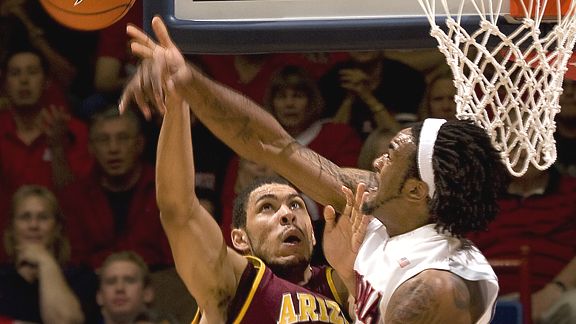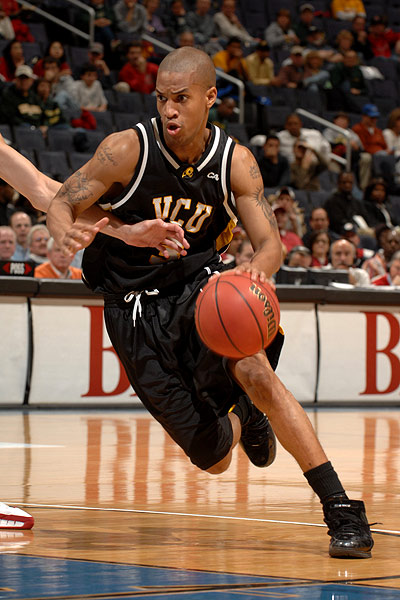 Tyler Smith, #1 SF, Tennessee
Tyler Smith, #1 SF, TennesseeHeight: 6'7"
Weight: 210 lbs
Strengths:
- Versatility
- Ideal NBA SF body
- Athleticism
- Wingspan/Length
- Slashing abilities
- Post game
- Unselfish
- Basketball IQ
- Defensive potential
Weaknesses:
- Perimeter shooting
- Mid-range game
- Dribbling
- Older than those in his class
- Does a lot well, but nothing great
Summary:
I like Tyler Smith as a ball player and as a person. While I was a student at the University of Tennessee, I had the opportunity to work with the Men's basketball program. I remember my first day there Smith walked up to me, introduced himself and said he was glad I was there to help. He was always one of the first, if not the first, on the practice court and one of the last to leave. During these times he would work on his shot, which showed his desire to work on a weaker part of his game. His teammates loved him; his coaches respected him; the office enjoyed him. All of these parties appreciated what he brought to the Vols family both on and off the court. He is a young man of high character who cares deeply for his family and those around him.
I always enjoyed watching Smith while I was at Tennessee. I found him to be an intriguing prospect. He played both the small forward and power forward positions, and he could guard multiple positions on any given night. His versatility was much needed to help be a leader for the Volunteers this season. His body and athleticism make him ideal to guard the SG, SF, and PF in college, and will definitely help at the next level. Smith is explosive, has great lateral quickness, and a great wingspan to help him either keep up with defenders, pick off passes or block shots. He does exemplify some defensive lapses, but his promise and versatility will be helpful for any NBA team.
Smith has some work to do on the offensive end of the floor. He does not shoot well from behind the arc, a skill that is important for the success of NBA wings (a career 29.5%). He has nice mechanics and a quick release, but in game play he does not always consistently release the ball at the same point, nor does he use a lot of his legs to shoot. Working on these parts of his game should help improve his shot, but you have to ask why these types of fundamentals have not been addressed.
Smith is a good slasher and post player. He is able to take the ball to the hoop, finish and get fouled (he averaged 6.5 attempts per game this season). Since he also played PF on numerous occassions, he had to develop a post game. He is fairly effective in the post, especially against smaller defenders, but he is also able to contend with stronger players. Smith does tend to do too much in both of these situations and needs to learn his limitations in these situations. He has very good court vision when he does not have the ball in his hands, and if he can understand his boundaries, he'll be able to develop his court vision with the ball. If he could work on his ball handling as well, he'd prove to be an even more effective slasher and post player.
Last year I would have put Smith as a late lottery pick. This year he did not really do anything to improve his draft stock, and may have actually hurt it. He needs to improve his perimeter shooting, work on his mid-range game and dribbling to be more of an offensive threat at the next level. His basketball IQ, versatility on the defensive end, defensive potential and his NBA-ready body will certainly interest a NBA team. As the saying goes, Smith is a jack of all traits, but a master of none. It leads me to believe that he will be a good role player that will come off the bench.
Projection: late first, early second (30-37)
Best fit: **TBD**







